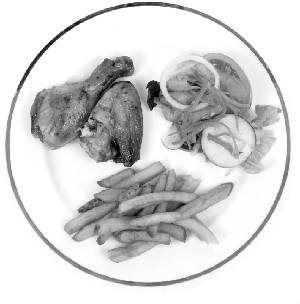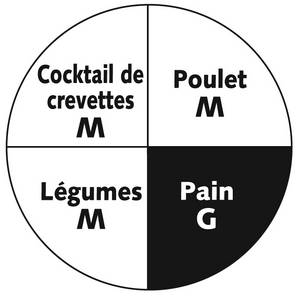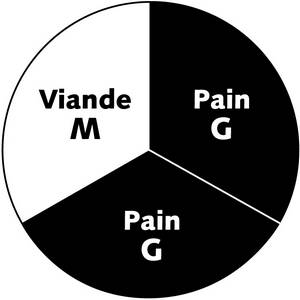Diet is not the only factor you need to control to boost your metabolism and lose weight. We have seen that there are many other factors that slow down metabolism (dehydration, medications, the candida albicans fungus , stress, etc.).
The fact remains that the diet we choose to follow is an important and even decisive factor in the success or failure of our weight loss process . Therefore, it seems wise to first have a clear idea of the diet most likely to accelerate your metabolism. The ideal diet would be one that doesn’t make you feel like you’re on a diet. It would also be nice if the chosen diet could become a permanent lifestyle that allows us to maintain a slim and healthy body, even after we have successfully lost weight. In other words, a diet that does not lead to the famous “yo-yo effect”, “relapse” or “rebound” which affect most of those who follow diets: these people generally regain the weight they lost , or even more.
I have developed a diet program that does not prohibit anything and can be followed easily, as long as you have a general idea of which foods help you lose weight and which ones make you gain weight. A key point is that your body can only gain weight when it produces enough insulin ; This is why a diet should aim to lower insulin production . Insulin is the hormone that transports both the glucose (blood sugar) and the fat we eat to the fat mass in our body. In other words, it is insulin , or rather its presence in too large quantities, linked to excessive consumption of refined carbohydrates, which causes weight and obesity problems.
In an effort to simplify things, we can divide foods into two groups, based on their propensity to stimulate the body’s insulin production when swallowed. The ones that cause your body to have a weak insulin response are the ones that MAKE YOU THIN. Conversely, foods that cause significant insulin production are those that MAKE YOU FAT. Our basic principle is to adopt a type of diet that helps us lose weight; with this in mind, we only consider two categories of foods:
TYPE OF FOOD: Foods that produce a LOW INSULIN RESPONSE in the body
EXAMPLES: Meats, chicken, turkey, fish, seafood, cheese, eggs, most vegetables, vegetable juices, salads, almonds, nuts
EFFECT ON BODY: SLIM
TYPE: M
TYPE OF FOOD: Foods that produce a STRONG INSULIN RESPONSE in the body
EXAMPLES: Bread, pasta, flour, rice, potatoes, starches, corn, root vegetables, cereals, sugar, candy, chocolate, milk, fruit juice , sugary drinks
EFFECT ON THE BODY: BUILD
TYPE: G
If we include more foods in our diet that produce a low insulin response (TYPE M) and fewer foods that produce a high insulin response (TYPE G), we will begin to lose weight. Any diet that lowers the body’s insulin production will melt body fat. In other words, it will make you slim down.
The program I recommend does not involve spending hours measuring portions, weighing your food or counting calories and carbohydrates: it is based on a FOOD PORTION VISUALIZATION SYSTEM : you choose the portions you want eat for each type of food (M or G), then you imagine them on your plate.

I called this system 2×1 ® and 3×1® Diets . “2×1” means “eat 2 servings of type M (Slimming) foods for 1 serving of type G (gaining weight) foods”. In other words, 2 servings of foods that make you lose weight (M), for only 1 serving of foods that make you gain fat (G). Your plate would look like this:

To make it easier to understand, I suggest you take a look at the following photo of a plate composed of grilled chicken (M), salad (M) and fries (G), i.e. a 2×1 ratio.
Looking at the photo opposite, you might be thinking that there isn’t much food on the plate and that you’ll probably still be hungry after eating it. It is only for the photo and so that you can clearly see the difference between the three types of food that we have put very little food on the plate on purpose. But with the 2×1 ® Diet , you can eat these foods as much as you want, until you are full. We even recommend that you never feel hungry, since in this case your metabolism slows down.
Once you start the 2×1 ® Diet, you will notice that you will no longer be hungry. Indeed, it is by reducing your portions of type G foods that your body will produce less insulin , the hormone that makes you feel hungry. By producing less insulin , you will feel less hungry and you will feel full much more quickly after having eaten less food.
For this diet to work, you need to consider EVERYTHING you put on your plate simultaneously. In other words, if you decide to have a good portion of bread before your main course, you will not then have the right to eat potatoes, which are type G foods, since you will have already had your portion of type G foods with bread. In short, choose what you want to eat but make sure that type G foods never make up more than a third of your entire meal. This is how you will reduce your body’s insulin production and start losing weight.

If, instead of potatoes or bread, you want to have dessert, do not eat the bread or the potatoes, in order to save your portion of type G foods for dessert. You will thus eat meat, salad and a dessert, i.e. a proportion of 2×1 between type M foods (which make you lose weight) and type G foods (which make you gain weight).
With this 2×1 ® Diet, you don’t have to deny yourself anything. If you wish, you can combine the portions of type G foods by, for example, only having a slice of bread, a small amount of potatoes and half of a dessert. The idea being that the sum of type G foods, which are those that make you gain weight due to the high insulin production they cause, never exceeds a third of what you consume in total. 2 servings of type M foods (which make you lose weight), plus one serving of type G foods (which make you gain weight) represent a “2×1” plate.
Fat from meat or protein will never make you gain weight as long as you ensure that your body’s insulin production remains low. You can do this by eating reasonable portions of type G foods. Without insulin , the fat you eat won’t make you gain weight. It’s insulin that allows the fat you eat to be stored as extra body fat. Without insulin , the fat you eat simply can’t make you fat. The key is to control your body’s insulin production by controlling your portions of type G foods.
For example, if you eat a pork chop with salad, the fat in the meat cannot be used by your body because the salad produces a very weak insulin response . But if you make the mistake of eating your pork chop with a heaping helping of mashed potatoes, you’re sure to gain weight. Mashed potatoes, as a starchy vegetable that is easily converted into glucose, will cause your body to produce a lot of insulin, which is a sure way to gain weight. Insulin is the “supermarket cart” that picks up fat and glucose and stores them as body fat. If you control your intake of type G foods, you will have no problem eating any type of fatty meat or other protein foods (cheese, eggs).

If you have a lot of fat to lose, if you are in a hurry to lose weight, or if you are diabetic, opt for the 3×1® Diet in which you must ensure that type G foods never exceed a quarter of your total fat intake. food. For example, a meal could start with a shrimp cocktail followed by chicken breast, cooked vegetables and a slice of bread.
The representation above corresponds to a 3×1® plate. In fact, you need 3 servings of type M foods for every serving of type G foods.
The 3×1® Diet causes less insulin production in your body than the 2×1® Diet for one obvious reason: it includes a smaller portion of type G foods. The 3×1® Diet is perfect for diabetics because it allows them to to control their glucose level and therefore their diabetes. The 3×1® Diet also reduces the need for insulin in diabetics who must administer their own injections. Those who regularly measure their blood glucose levels will see a dramatic drop with the 3×1® Diet.
Be careful not to stuff yourself with breaded foods. Breaded meats, for example, are covered in flour, in other words, bread. If you have breaded shrimp, you should consider the breading a Type G food, which counts as one serving. If you don’t want to break your 2×1 ® or 3×1® Diet, you should treat breading as a Type G food. You also shouldn’t fool yourself by not considering the VOLUME of the food (the space they occupy). If you take a very large portion of roast potatoes which, when spread out, takes up 2/3 of the plate, you should consider them in terms of VOLUME as 2 servings of type G foods. So that the diet works, use common sense and don’t try to cheat yourself.
For my part, when I have a good baked potato, for example, I cut it in two so that I only eat half, accompanied by a good salad and a little meat. This way, I don’t have to deny myself anything and I don’t break my 2×1 ® Diet . Obviously, if I eat a whole baked potato, it goes without saying that I will have to deprive myself of the slice of bread that I usually like to have. Sometimes I order a protein-rich starter like a shrimp or seafood cocktail, oysters, or even cheese at a restaurant, and I ask the waiter not to bring me any bread so I won’t be tempted.

The problem with sandwiches and burgers is that the majority of them are, in proportion and VOLUME, mostly bread. If you put the ingredients of a hamburger on a plate to study the portion represented by the two pieces of bread, you get something like this:
The amount of salad in a hamburger is so small compared to that in bread, that you can’t even consider it a serving of type M foods. Sandwiches and hamburgers will not help you lose weight because the bread that they contain causes too much insulin production . This is why fast-food restaurants have such negative consequences on the health of the population. As if these foods rich in refined carbohydrates weren’t already doing enough damage, fast-food restaurants also offer these hamburgers in “menu” type offers, accompanied by fries (type G) and soda (type G).
Among foods that are considered refined carbohydrates, such as bread, not all have the same properties. It turns out that white bread is digested very quickly. This allows your body to turn it first into glucose very easily and then quickly into fat. Nothing prevents you from preferring wholemeal bread, which is rich in fiber and which will allow you to stimulate your metabolism and lose weight more easily. This is why a wholemeal bread sandwich will always be less harmful than a white bread sandwich. Bread, whether wholemeal or white, remains type G given the amount of insulin production it causes in the body. If you can eat wholemeal bread rather than white bread, you will have already scored more points.
Regarding fruits, I can tell you that if a fruit is sweet, that means that it is also rich in carbohydrates and that it should be classified among foods that make you gain weight, those of type G: you must therefore monitor its consumption. Very sweet fruits like bananas, mangoes, melons, pineapples, and oranges are all Type G foods. However, fruits that are not too sweet like strawberries and apples are considered Type G foods. M and make you slim. Generally speaking, if the fruit is sweet, it is a type G food and if it is not too sweet, it is a type M food.
If your situation has gotten worse and you are very overweight or obese, think about all this and you will realize that you are eating 5 to 8 times more type G foods (which make you fat) than type M foods (which make you fat). make you lose weight).
A dinner that begins with a slice of garlic bread, continues with a starter of fried donuts, continues with a 340 gram steak accompanied by a large baked potato and cooked corn on the cob, all washed down with Coke, and ending with a sweet dessert (cheesecake, ice cream), represents a proportion of approximately 1×6 between type M and type G foods. It’s a disaster for your metabolism.
So, choose a 2×1 ® or 3×1® Diet , depending on your needs and goals. You can also start with the 3×1® Diet to achieve results that motivate you and allow you to directly achieve your goal at first, then move on to the 2×1 ® Diet to stay slim. Whatever you decide to do, if you reduce your intake of type G foods and increase your intake of type M foods, you will see your fat disappear and your metabolism will speed up.
2×1 combinations are inexhaustible. Here are a few you might enjoy:

BREAKFAST 2×1: EGGS, BACON AND POTATOES

LUNCH OR DINNER 2×1: MEAT, SALAD AND PASTA

MEAL 2×1: GRILLED SALMON WITH RICE AND VEGETABLES

